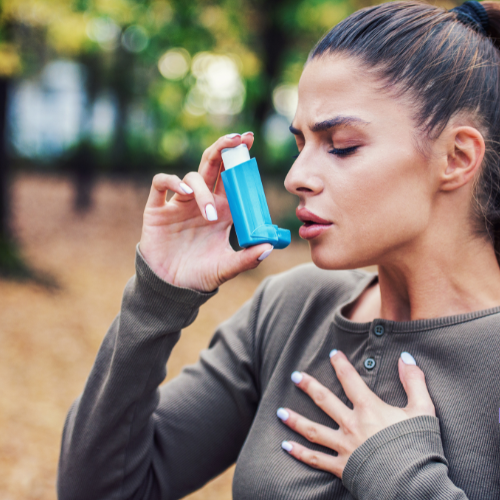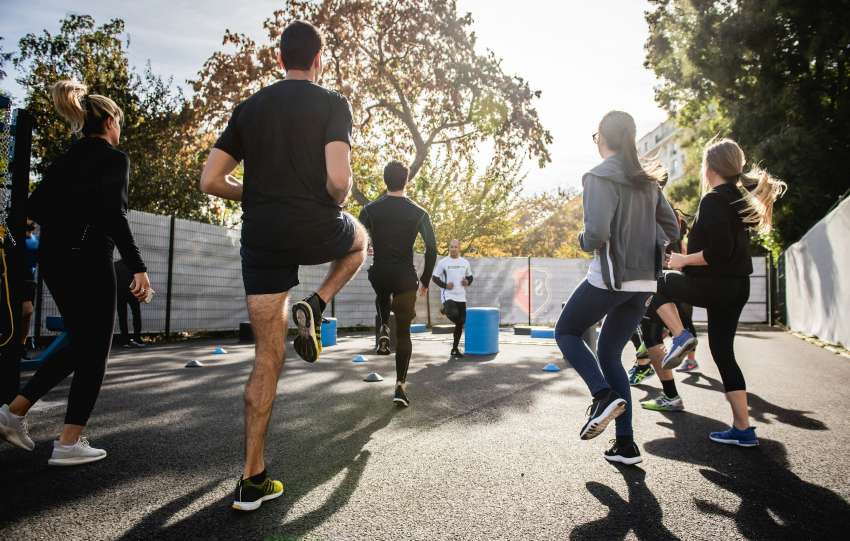Extra Disclaimer: This post provides information and discussions about asthma and related subjects. The information and other content provided in this post are not intended and should not be construed as medical advice, nor is this post a substitute for professional medical advice and/or treatment. If you or any other person has a medical concern, consult with a health care professional.
As someone living with asthma, I understand the unique challenges it brings, especially when tackling physically demanding activities like hiking. The tightness in your chest, the moments when it feels like your lungs are working overtime, and the constant need to be cautious—it’s a lot. But it’s also not impossible. I’ve managed to hike long, challenging trails despite asthma, and I’m here to share how you can too. This blog is dedicated to helping you prepare for the trail, not just in terms of logistics, but in building your strength, endurance, and confidence.
What Is Asthma and How Does it Impact Hiking?
Why High Altitudes Feel Harder (and What to Do About It)
Higher altitudes bring thinner air and lower oxygen levels, which can be difficult for those with asthma. Additionally, dry, cold air can irritate airways. If you’re planning a high-altitude hike, follow these tips:
- Acclimate Slowly: Spend a day at a lower altitude to let your body adjust.
- Stay Hydrated: Dehydration can worsen symptoms. Drink water regularly.
- Protect Your Airways: Use a scarf or buff to warm and moisten the air you breathe.
Learn more about what to know before going on a multi-day hike for further preparation tips.

Preparing Your Body: Exercises to Boost Lung Capacity
While you can’t fully replicate the high-altitude conditions of mountain hikes, you can prepare your lungs and body to handle the challenges of the trail. Incorporating targeted exercises into your routine can make hiking less hard and more enjoyable. Here are some effective ways to improve your lung capacity and overall endurance:
- Cardio Workouts: Try activities like swimming, cycling, or jogging to build your endurance without pushing yourself too hard. Swimming is especially helpful because it strengthens your lungs and improves your breathing control.
- Breathing Exercises: Use techniques like deep belly breathing or pursed-lip breathing to make your lungs work better and help you manage shortness of breath when you’re exerting yourself.
- Yoga: Practicing yoga regularly not only improves your breathing but also helps calm your mind, which is essential for handling both the physical and mental challenges of hiking.
- Interval Training: Add short bursts of intense activity followed by rest periods. This simulates the effort and recovery you experience while hiking, helping your body get better at handling it.

By integrating these exercises into your preparation, you’ll significantly improve your ability to tackle challenging trails. These workouts not only condition your body for physical exertion but also teach you to recognize and manage your limits—valuable knowledge if unexpected challenges arise on your hike.
Managing asthma symptoms on the trail
- Stop and rest: If your asthma symptoms get worse, find a safe place to stop and rest. Sit down and take slow, deep breaths to help ease the symptoms.
- Use your inhaler: If you have a prescribed inhaler, use it as your doctor instructed. Make sure to follow the proper technique and give it time to work.
- Stay hydrated: Drinking water can help calm your airways and ease asthma symptoms. Take small sips of water regularly during your hike.

- Avoid triggers: If you come across things that trigger your asthma, like pollen or smoke, try to steer clear of those areas or take a different route if you can.
- Get medical help if needed: If your symptoms don’t improve with rest and medication, get medical help. Don’t hesitate to call emergency services if necessary.
How to Prepare for a long hike with asthma?
- Stay on marked trails: Leaving marked trails can increase the risk of getting lost or encountering hazardous terrain. Stick to designated paths to ensure your safety.
- Check weather conditions: Keep an eye on the weather forecast to avoid hiking in extreme temperatures or during poor air quality days, which can worsen asthma symptoms.
For more information about how to prepare for any long hike, whether you have asthma or not, Click here!
Gear Up for Success
- Inhaler First: Always carry your inhaler in an easy-to-reach pocket. Avoid stashing it deep in your bag—it should be accessible at a moment’s notice.
- Dress Smart with Layers: Layer up to keep your body temperature stable and reduce exposure to triggers like cold air. Add or shed layers as needed to stay comfortable.
- Stay Fueled and Hydrated: Keep energy up with small, frequent snacks and plenty of water. Proper hydration can also help prevent airway dryness.
- Humidifier Bottles: These specialized water bottles add moisture to the air you breathe, reducing irritation and making outdoor adventures easier on your lungs.
- Portable Nebulizers: A compact, portable nebulizer can be a game-changer for managing severe asthma symptoms in the great outdoors.
- Leverage Technology: Use apps and devices to monitor weather conditions, track elevation changes, measure your heart rate, or even log your breathing patterns. These tools can help you stay proactive and safe during your adventure.

For a complete packing checklist, explore our hiking packing checklists.
How to Pick the Right Trail for You
- Trail Length and Elevation: Start with shorter, easier trails to build your confidence and stamina.
- Trail Location: Choose trails near places with amenities, just in case you need help.
- Weather and Conditions: Avoid very cold, dry, or pollen-heavy areas that could trigger your symptoms.
- Difficulty: Check online reviews or apps like AllTrails to see how hard a trail is.
Take a Friend with you!
How to Prepare for the Unexpected
Even with great preparation, you can’t plan for everything. Here’s what you can do for unexpected situations:
- Emergency Contact Plan: Share your travel details with a friend or family member.
- First Aid Kit: Make sure to pack things like extra inhalers or a peak flow meter.
- Medical Alert Bracelet: Think about wearing a bracelet that tells others about your condition, so they can help if needed.
- Know When to Turn Back: If your symptoms get worse, it’s okay to stop and head back. Pay attention to how your body feels.

If They Can Do It, So Can You
Embrace the Challenge
For more tips on outdoor adventures, check out our beginners’ guide to hiking and how to safely drink water from a wild stream.




